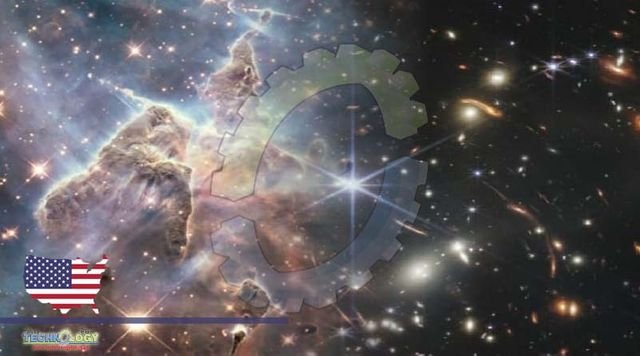The Webb Telescope Reveals a New Vision of an Ancient Universe , The universe was born in darkness 13.8 billion years ago, and even after the first stars and galaxies blazed into existence a few hundred million years later, these too stayed dark. Their brilliant light, stretched by time and the expanding cosmos, dimmed into the infrared, rendering them and other clues to our beginnings inaccessible to every eye and instrument.

Until now. On Tuesday the James Webb Space Telescope, the most powerful space observatory yet built, offered a spectacular slide show of our previously invisible nascent cosmos. Ancient galaxies carpeting the sky like jewels on black velvet. Fledgling stars shining out from deep within cumulus clouds of interstellar dust. Hints of water vapor in the atmosphere of a remote exoplanet. Their sum is both a new vision of the Ancient Universe and a view of the Ancient Universe as it once appeared new. “That was always out there,” said Jane Rigby, an astrophysicist at NASA’s Goddard Space Flight Center in Greenbelt, Md., and the telescope’s operations manager. “We just had to build a telescope to go see what was there.”
The Webb telescope NASA’s vaunted successor to the Hubble Space Telescope, 30 years and nearly $10 billion in the making is equipped to gain access to this realm of cosmic history, study the first stars and galaxies and look for nearer, potentially habitable worlds. It is a collaboration among NASA, the European Space Agency and the Canadian Space Agency. The image, of a distant star cluster called SMACS 0723, revealed the presence of still more-distant galaxies spilled across the sky. The light from those galaxies, magnified into visibility by the gravitational field of the cluster, originated more than 13 billion years ago.
To look outward into space is to peer into the past. Light travels at a constant 186,000 miles per second, or close to six trillion miles per year, through the vacuum of space. To observe a star 10 light-years away is to see it as it existed 10 years ago, when the light left its surface. The farther away a star or galaxy lies, the older it is, making every telescope a kind of time machine. Astronomers theorize that the most distant, earliest stars may be unlike the stars we see today. The first stars were composed of pure hydrogen and helium left over from the Big Bang, and they could grow far more massive than the sun — and then collapse quickly and violently into supermassive black holes of the kind that now populate the centers of most galaxies
Source: This news is originally published by nytimes